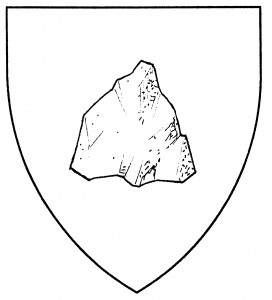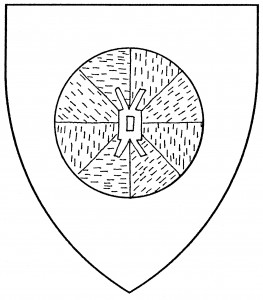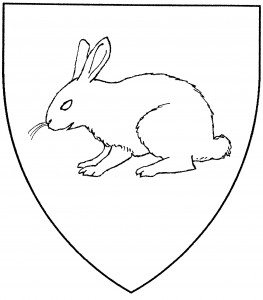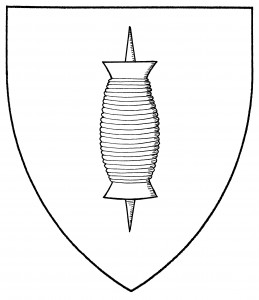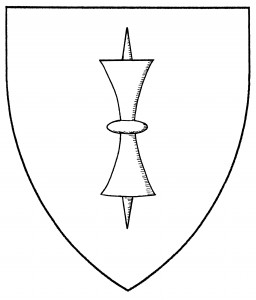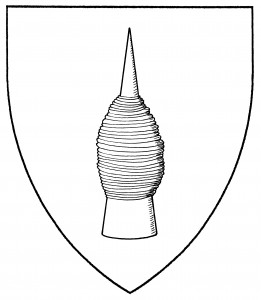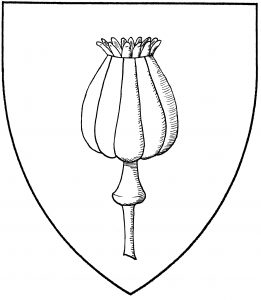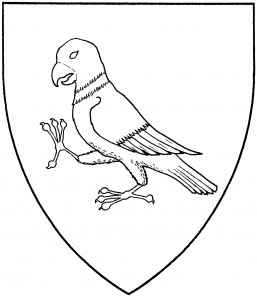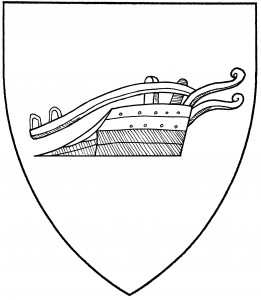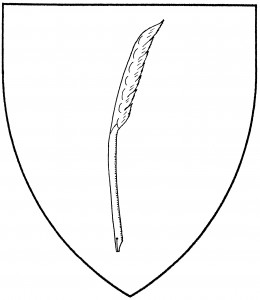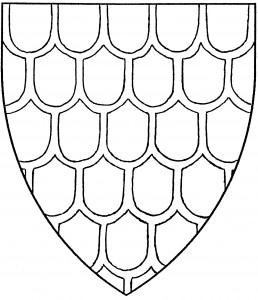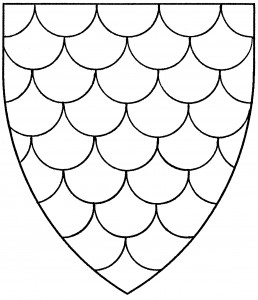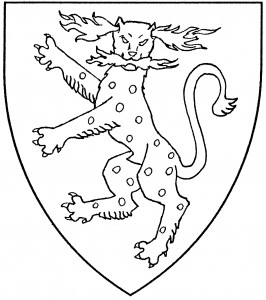A rock is an irregular mass of stone; it is also called a “stone”, though that usually implies a smaller mass. When used as an independent charge, the rock is drawn lumpishly to distinguish it from a roundel. Rocks are found in the canting arms of Pedrosa, c.1540 [Nobreza xvi]. When issuant from base, a rock becomes essentially a rocky mount.
A specific type of rock is the “flint”, used for striking sparks against a furison to start fires. It was used as one of the badges of the Order of the Golden Fleece, 1430 [Friar 170; Volborth 216]. The flint is depicted as a rock with spurts of flame issuant from the sides, sometimes radiating across the field.
Period armory gives us the “millstone”: a large circular stone, turned by water power, used for grinding grain. It forms the base of the mill; it’s rendered essentially as a diapered roundel, frequently charged with a millrind. The millstone is a period charge, found in the arms of Spiser, c.1340 [Zurich 253].
Rocks come in many materials – basalt, marble, sandstone – so, strictly speaking, they have no “proper” coloration. Nonetheless, there are a few instances of “rock proper” or “stone proper” in Society blazonry; these assume the rock is grey granite, and are treated as if they were argent.
See also dolmen (menhir), grindstone.
Hallmundr Grimsson bears: Barry wavy azure and argent, a stone sable.
Piers Howells de Cambria bears: Azure, an owl reguardant Or perched atop a rock issuant from base argent.
Juliana Neuneker Hirsch von Schutzhundheim bears: Sable, a flint between four furisons in saltire, steels to center Or.
